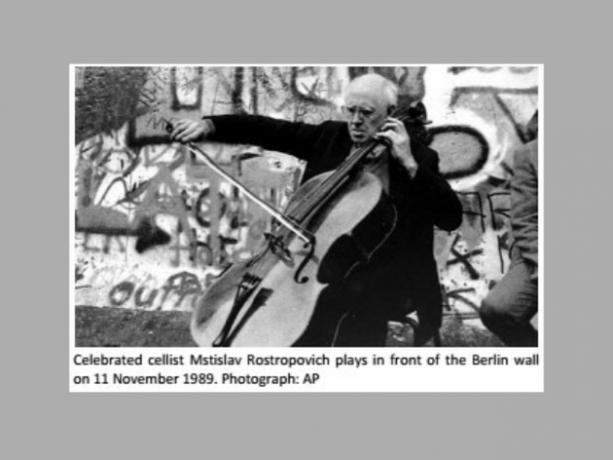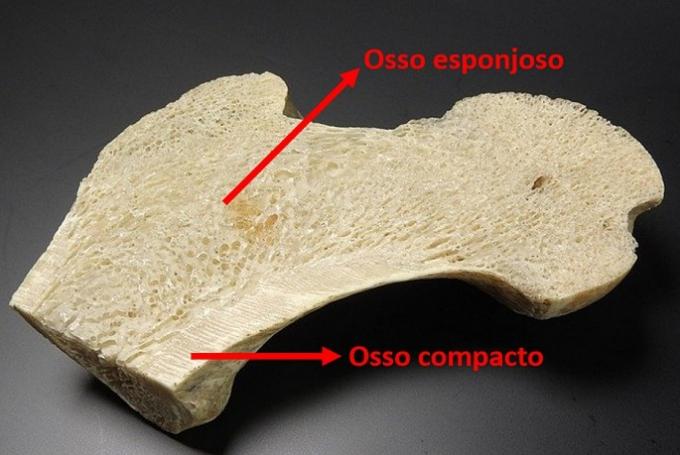Correct answer: I cleaned the house three times yesterday.
Translation: I cleaned the house three times yesterday.
The formation of sentences in the affirmative of the Simple Past follow the structure below:
Subject + inflected verb + complement
The verb I'm clean (clear) is a regular verb and therefore its inflection of Simple Past consists of the infinitive form without the I'm + termination –ed.
The main verb in the infinitive is I'm clean. Without I'm, we have clean. With the addition of the ending –ed, we come to the flexion of Simple Past of the verb: cleaned.
Correct answer: She opened the windows because it was too hot in here.
Translation: She opened the windows because it was too hot in here.
The formation of sentences in the affirmative of the Simple Past follow the structure below:
Subject + inflected verb + complement
The verb I'm open (open) is a regular verb and therefore its inflection of Simple Past consists of the infinitive form without the I'm + termination –ed.
The main verb in the infinitive is
I'm open. Without I'm, we have open. With the addition of the ending –ed, we come to the flexion of Simple Past of the verb: opened.Correct answer: The class did not begin at 8 am or The class didn’t begin at 8 a.m.
Translation: Class didn't start at 8 am.
Note that the exercise indicates that the sentence must be constructed in negative form.
The denial of the Simple Past is formed with the auxiliary verb did + not + main verb in infinitive without the I'm. It is also possible to use the contracted form of did + not: didn’t.
The main verb in the infinitive is to begin (to start). Without I'm, we have begin.
It is important to note that whenever the auxiliary verb is used did, the main verb must be used in its infinitive form, without the I'm.
Correct answer: He wanted to be a doctor when he was a kid.
Translation: He wanted to be a doctor when he was a child.
The formation of affirmative sentences in Simple Past follow the structure below:
Subject + inflected verb + complement
The verb I want (querer) is a regular verb and, therefore, its inflection of Simple Past consists of the infinitive form without the I'm + termination –ed.
The main verb in the infinitive is I want (to want). Without I'm, we have I want. With the addition of the ending –ed, we come to the flexion of Simple Past of the verb: wanted.
Right answer: Did the accident happen last night?
Translation: Did the accident happen last night?
Note that the exercise indicates that the sentence should be constructed in interrogative form.
The formation of interrogative sentences in Simple Past follow the structure below:
Did + subject + main verb in infinitive without to + complement
It is important to note that whenever the auxiliary verb is used did, the main verb must be used in its infinitive form, without the I'm.
The main verb in the infinitive is to happen (to happen). Without I'm, we have happen.
Correct answer: We stayed at a nice place in LA.
Translation: We stayed in a nice place in LA.
The formation of sentences in the affirmative of the Simple Past follow the structure below:
Subject + inflected verb + complement
The verb to stay (to stay) is a regular verb and therefore its inflection of Simple Past consists of the infinitive form without the I'm + termination –ed.
The main verb in the infinitive is to stay. Without I'm, we have stay. With the addition of the ending –ed, we come to the flexion of Simple Past of the verb: stayed.
Correct answer: they did not enjoy the party. or they didn’t enjoy the party.
Translation: They didn't enjoy the party.
Note that the exercise indicates that the sentence must be constructed in negative form.
The denial of the Simple Past is formed with the auxiliary verb did + not + main verb in infinitive without the I'm. It is also possible to use the contracted form of did + not: didn’t.
The main verb in the infinitive is i enjoy (enjoy). Without I'm, we have enjoy.
It is important to note that whenever the auxiliary verb is used did, the main verb must be used in its infinitive form, without the I'm.
Correct answer: My grandmother died when I was eight.
Translation: My grandmother died when I was eight years old.
The formation of sentences in the affirmative of the simple countryt follows the structure below:
Subject + inflected verb + complement
The verb to die (to die) is a regular verb and therefore its inflection of Simple Past consists of the infinitive form without the I'm + termination –ed.
The main verb in the infinitive is to die. Without I'm, we have die. As the verb ends with the letter and, instead of adding the ending –ed, just add –d. Thus, we arrive at the flexion of Simple Past of the verb: died.
Correct answer: He did not eat to work by bus. or he didn’t eat to work by bus.
Translation: He didn't come to work by bus.
Note that the exercise indicates that the sentence must be constructed in negative form.
The denial of the Simple Past is formed with the auxiliary verb did + not + main verb in infinitive without the I'm. It is also possible to use the contracted form of did + not: didn’t.
The main verb in the infinitive is I'm eating (come over). Without I'm, we have eats.
It is important to note that whenever the auxiliary verb is used did, the main verb must be used in its infinitive form, without the I'm.
Correct answer: Why did you take to cab to the airport?
Translation: Why did you take a taxi to the airport?
Note that the exercise indicates that the sentence should be constructed in interrogative form.
The formation of interrogative sentences in Simple Past follow the structure below:
Did + subject + main verb in the infinitive without the to+ complement
It is important to note that whenever the auxiliary verb is used did, the main verb must be used in its infinitive form, without the I'm.
The main verb in the infinitive is to take (to take). Without I'm, we have take.
Correct answer: When did he arrive?
Translation: When did he arrive?
In interrogatives, the formation of sentences in the Simple Past follows the following structure:
Did + subject + main verb in the infinitive without the to+ complement
When we use the auxiliary verb did, the main verb must be used in its infinitive form, without the I'm.
In this case, the main verb in the infinitive is to arrive (to arrive). Without I'm, we have arrive.
Correct answer: He was a great student.
Translation: He was a great student.
As a general rule, the assistant did is not used in statements in the Simple Past. Therefore, the main verb needs to be inflected to indicate the tense of the sentence.
At the Simple Past, the verb to be presents two flexions:
- Was: used with he, she and it;
- were: used with we, you and they.
As it is an irregular verb, its inflections of Simple Past do not end in -ed.
The formation of affirmative sentences in Simple Past follows the following structure:
Subject + inflected verb + complement
Answer: We did not have French classes at school. or we didn’t have French classes at school.
Translation: We didn't have French lessons at school.
To form negative sentences in the Simple Past, we use the auxiliary verb did + not + main verb in infinitive without the I'm. We can also choose the contracted form of did + not: didn’t.
The main verb in the infinitive is I have (to have). Without I'm, we have have.
Where the auxiliary verb did is used, the main verb must be used in its infinitive form, without the I'm, that is, it cannot be flexed.
A negative sentence conjugated in the Simple Past follows the following structure:
Subject + did not or didn’t + main verb in infinitive without to + complement
Reply: Did you live in New York?
Translation: Did you live in New York?
In interrogative sentences in the Simple Past, which indicates the tense is the auxiliary did. Whenever it's used, we don't inflect the main verb; it is used in the infinitive without the I'm.
The main verb of the sentence is I'm live (to live). So its infinitive form without the I'm é live.
Interrogative sentences in the Simple Past follow the following structure:
Did + subject + main verb in the infinitive without the to+ complement
Answer: Why did you invite him to the party? You knew he was a troublemaker!
Translation: Why did you invite him to the party? You knew he was a troublemaker!
Interrogative sentences in the Simple Past follow the following structure:
Did + subject + main verb in infinitive without to + complement
whenever the did is used, the main verb of the sentence is not inflected, but used in the infinitive without the I'm. That is why, to invite (invite) becomes invite.
Answer: She went to the hospital because she wasn’t feeling well. or she went to the hospital because she was not feeling well
Translation: She went to the hospital because she wasn't feeling well.
In affirmative sentences in the Simple Past, the tense is indicated through the inflection of the main verb.
the main verb I'm going (ir) is irregular and, therefore, its flexion is not formed with the termination -ed; it has its own shape: went.
An inflecting verb in the affirmative form of Simple Past is not accompanied by the assistant did.
Thus, the first gap must be filled with went (was).
In the second part of the sentence, we need to be aware of an exception: although the general rule indicates that the denial of Simple Past be formed with did not or didn’t, this does not happen when the main verb is the to be (to be).
reason: the verb to be has its own crunches: was not or wasn’t; were not or weren’t.
So, just choose the correct option:
- was not and wasn’t: used with he, she and it
- were not and weren’t: used with I, we, you and they.
as the subject of the sentence is she, the correct option is was not or wasn’t.
Answer: They worked at that company for 30 years.
Translation: They worked at that company for 30 years.
The main verb of the sentence (I work - work) is a regular verb. So, your bending of Simple Past is formed with the addition of the ending -ed (work > worked).
As a general rule, in affirmative sentences we do not use the auxiliary did, but the main verb in the infinitive without the I'm, flexed.
Affirmative sentences in the Simple Past follow the following structure:
Subject + inflected verb + complement
Answer: Did he win the race?
Translation: Did he win the race?
The structure of interrogative sentences in Simple Past follows the following formation:
Did + subject + main verb in infinitive without to + complement
In interrogatives, the main verb is not inflected to indicate the tense, as this indication is expressed by the use of did.
Answer: I saw them at the shopping mall.
Translation: I saw them at the mall.
The verb I see (see) is an irregular verb and, therefore, its inflection of Simple Past is not formed with the addition of the ending -ed; it has its own shape: saw.
As a general rule, the assistant did it is not used in affirmative sentences.
Affirmative sentences in the Simple Past follow the following structure:
Subject + inflected verb + complement
Subject + did not or didn’t + main verb in infinitive without to + complement



